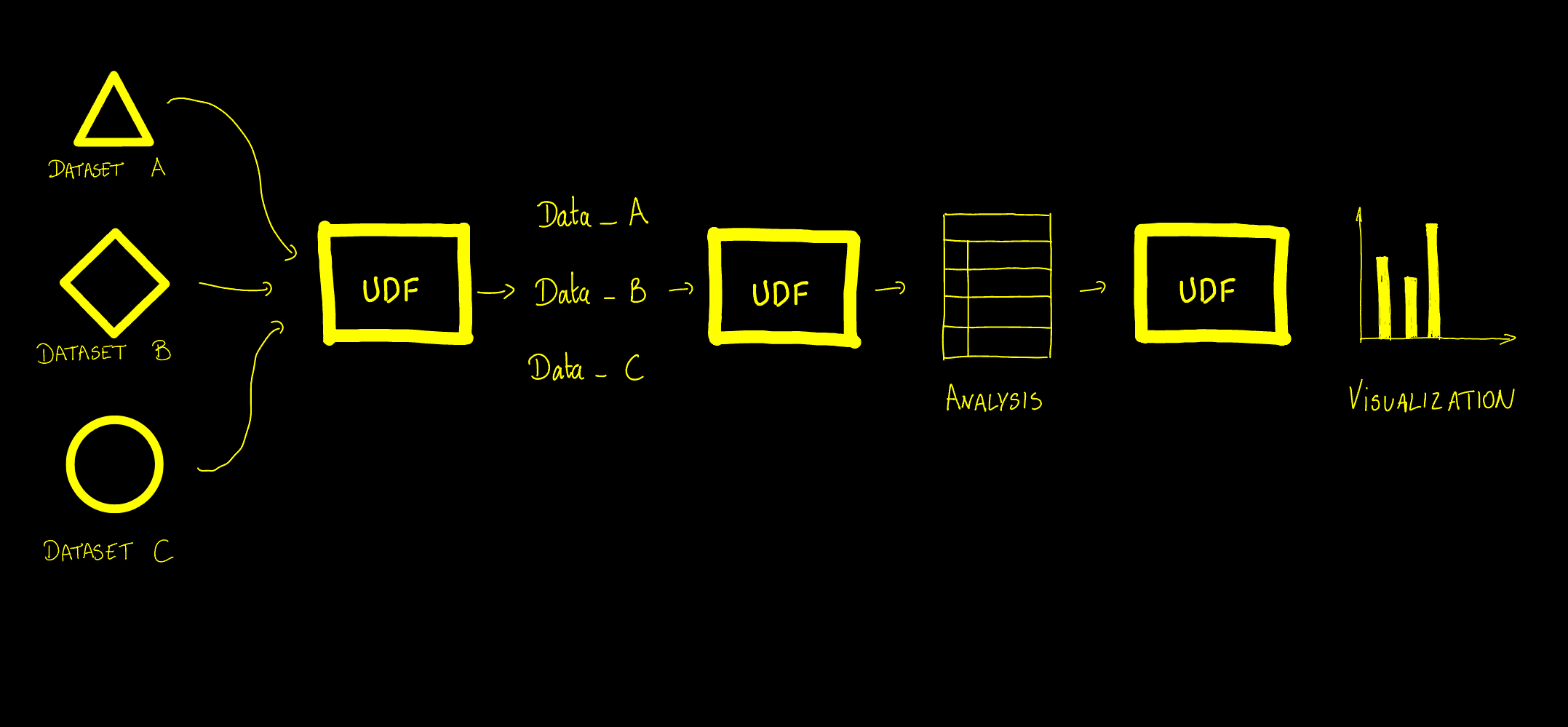Why UDFs
At Fused, our mission is to help get things done, fast. We want every team to be able to get from Analytics to Action as quickly as they can.
We also deeply believe AI is changing the way we work. So here's Notebook LLM telling you all about Fused in 5min:
Our core believes
We believe every Analytics team should have the tools to:
- 🌍 Answer the big picture problems first;
- 💡 Iterate on their analysis when new data & algorithms becomes available;
- 🏃 Ship a first version rather than getting it perfect;
- 📊 Visualize & report their work to anyone in their team.
User Defined Functions
A lot of the tools Analytics teams have today slow the process down:
- Python dependency management gets in the way of getting work done.
- A lot of the scientific Python tooling focused more on getting the result down to 10 decimals places rather than answering the big picture
That's why we built Fused around User Defined Functions, UDFs.

UDFs are the DNA of analytics. They are Python functions that can be called from anywhere:
- 🐍 No environment setup: Just start writing Python immediately.
- 🔗 Shareable as HTTPS endpoints in 2 clicks: Ship your work to the rest of the team
- 🔄 Iterable: Edit your code, Save, and see the results downstream immediately.
- 🚀 Scales with your hardware requirements: From running a subset of data to analyzing the entire world.
UDFs are the DNA of analytics
Making every process of your Analytics a UDF makes it faster:
- Data needs to be ingested constantly: UDFs can be edited as datasets change & evolve. They get updated when you save them.
- New algorithms come and go: UDFs allow you to iterate on existing data and swap out just what you need.
- Reporting & Visualization evolve: UDFs can take your analysis and render it in dynamic ways.
From your laptop to the World
Look, we know that many Analytics project start in a notebook on a laptop.
- 💻 Start by running UDFs locally, then in 2 lines of code scale to datasets the size of the world
- 🌍 UDFs can be called from anywhere: From a notebook, a frontend application or integration platforms
- 🔀 Work locally or in Workbench, our browser based IDE interchangeably
Efficiently Scaling
Because Fused is built
- ☁️ Serverless computing: Only pay for the processing you actually use
- ⚡️ Caching makes recurring calls faster & cheaper
Get started using UDFs right now
Check out:
- ⚡️ The Quickstart guide: Learn how to use UDFs in 5 minutes
- 📚 UDF Core Concepts: Everything you need to know about building & using UDFs
- 🎓 Our Examples: Real world examples of how to use UDFs